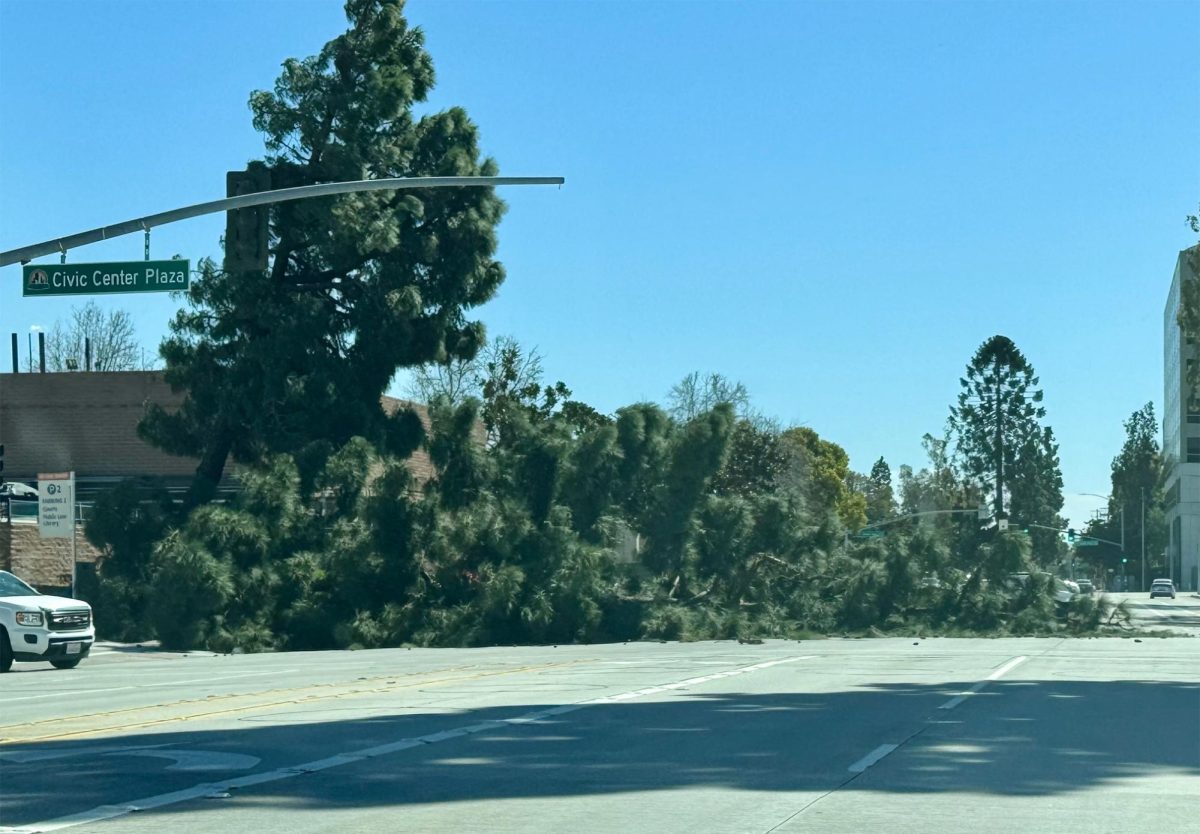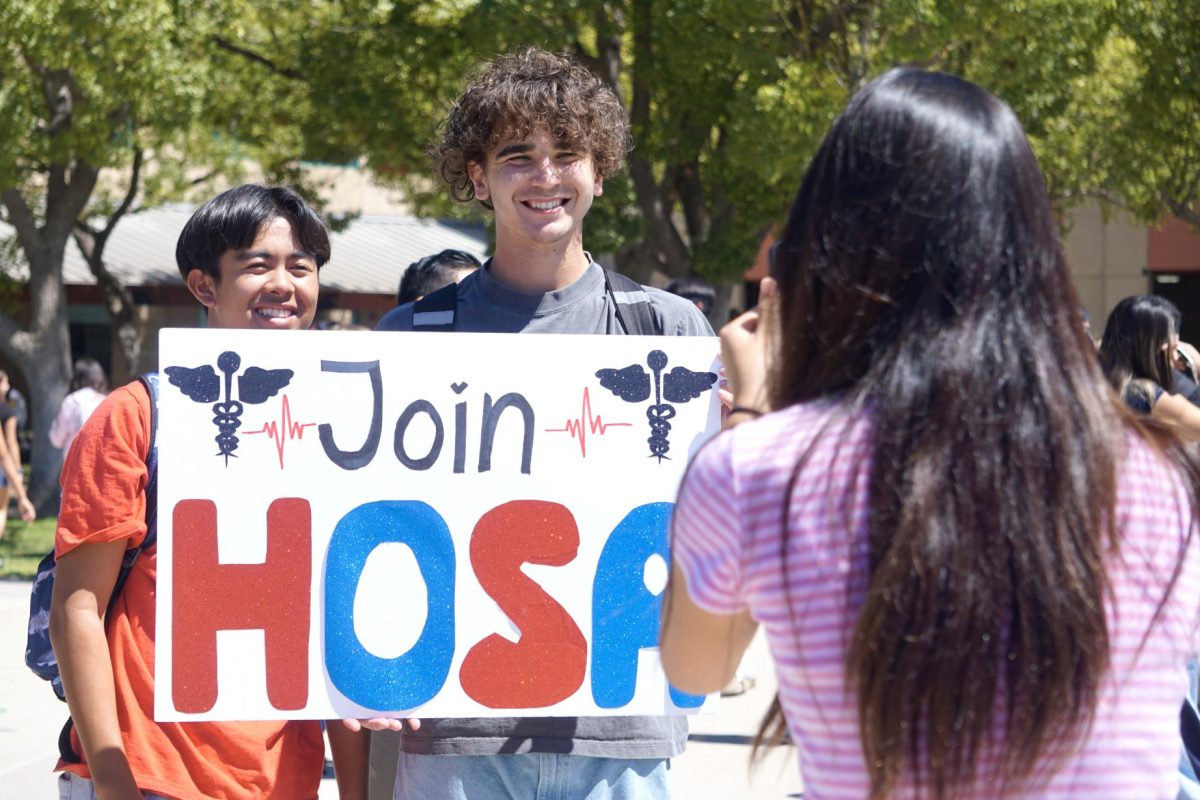A familiar weather phenomenon returned to Orange County on March 14: the Santa Ana winds.
Students arrived to campus to light breezes, but at 8:46 a.m. the National Weather Service (NWS) issued a high wind warning to five Southern California counties. By noon, winds whipped across the BOHS campus at 25-miles per hour, sending student lunches flying off tables and toppling trash bins.
The Santa Ana winds — named after Orange County’s Santa Ana Canyon — are the dry winds that affect the Southern California region from October to March. The downslope-traveling breezes occur on the leeward sides of mountains and as they descend from higher elevations — like the Great Basin, which spans several Western states, and the San Bernardino mountains — air pressure rises, compressing the winds and increasing their speeds.
These high winds affected campus student life on Thursday, disrupting after-school outdoor sports practices and forcing indoors those students who normally spend breaks in the quad. While hurrying from class to class, students shielded their eyes from swirling dust and managed their disheveled hair.
But aside from debris amassing in outdoor corridors and a few dislodged planks from custodial areas, the campus was spared significant damage.
“There are no major concerns at this point,” Bryson Burns, administrative designee, said. “Just elevated allergies and runny noses and itchy eyes.”
After school outdoor sports were especially affected by the high winds.
At baseball practice, “the ball was flying off [the bat] during batting practice,” Brian Shrubb, senior, said, and Deacon Britton, freshman, noted that “hats were flying off heads.”
The winds also interrupted baseball’s annual media day.
“While we were trying to take pictures, everyone’s hair was flying everywhere. It was crazy,” Micah Fessler, freshman, said. “I’m hoping [the pictures] turn out okay.”
During varsity tennis’s match against El Modena High School, players had to make adjustments because “the harsh winds caused constant mistakes,” Justin Choi, junior, said.
The high winds also pose a threat to shrub-covered hills that bracket two sides of the campus. “[Administration] had us looking out for any potential fires that might happen, especially on the west side of campus where we have some dry bush” near the oil rigs, Bob Till, campus supervisor, said.
According to Andrea Ramos, AP Environmental Science teacher, the likelihood of fires increases in windy conditions, especially when there are dry gusts arriving from the deserts.
However, while Brea is prone to fires in drier seasons, February’s record rainfall poses a different threat: “After receiving a lot of rain, the ground is very soft” and the damp, loose soil can cause “trees to blow over more quickly,” Ramos said.
And trees did, indeed, fall.
James Voge, Mock Trial attorney coach, was commuting to BOHS for after-school practice when a massive pine tree toppled onto Civic Center Plaza street in Santa Ana directly ahead of him.
“The first thing that came into my mind was, ‘I feel really bad for the tree,’” Voge said. “It probably stood for over a century, yet it just took one day of high winds for it to fall so quick.”









